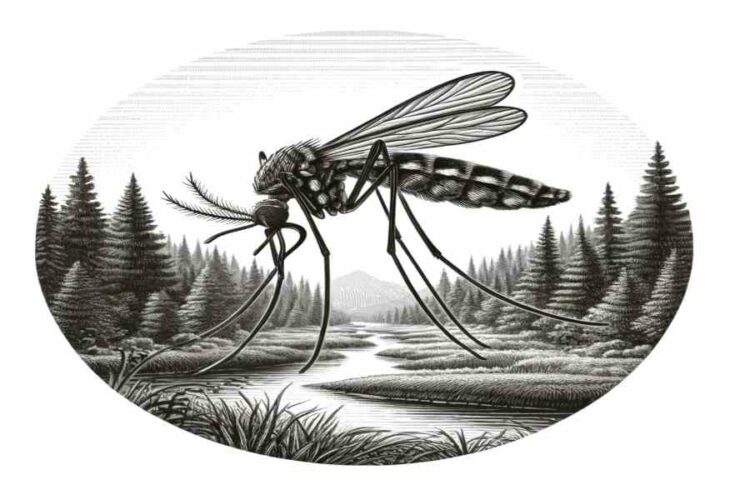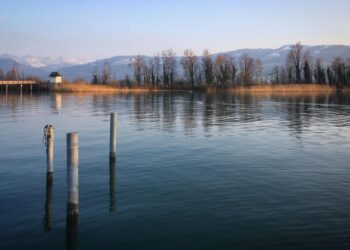Mosquitoes are a familiar nuisance, especially during the warmer months. Their bites can be irritating, and some species are known vectors for serious diseases. This raises the question: “Are mosquitoes native to North America?” Understanding the origins of mosquitoes, their species diversity, and their ecological impact can help us better manage and mitigate their presence. This article explores whether mosquitoes are indigenous to North America, the various species that inhabit the continent, and their role in the ecosystem.
Are mosquitoes native to North America?
Yes, mosquitoes are native to North America. Several species are indigenous to the continent, although some invasive species have also been introduced. Native species have adapted to various climates and play specific roles in their ecosystems, despite their reputation as pests.
The Origins of Mosquitoes
Ancient Origins and Evolution
Mosquitoes have existed for millions of years, evolving in tropical regions before spreading worldwide. Fossil records show that mosquitoes have been around for at least 100 million years. Over time, they have adapted to diverse habitats, from tropical rainforests to arctic tundras.
Adaptation to North America
In North America, mosquitoes have established themselves in various ecosystems. The continent is home to numerous mosquito species, each adapted to different climatic and environmental conditions. These adaptations have allowed them to thrive in diverse regions, from wetlands to urban areas.
Are Mosquitoes Native to North America?
Native Species
Several mosquito species are indeed native to North America. These species have evolved over thousands of years and have adapted to the continent’s diverse climates and habitats. Some well-known native species include:
- Aedes vexans: Commonly found in floodwater areas and known for its aggressive biting behavior.
- Culex pipiens: Often found in urban and suburban areas, this species is a known vector for West Nile virus.
- Anopheles quadrimaculatus: A significant vector for malaria in the past, particularly in the southeastern United States.
Invasive Species
In addition to native species, several invasive mosquito species have been introduced to North America through human activity. These invasive species often compete with native species and can pose new health risks. Notable invasive species include:
- Aedes aegypti: Known as the yellow fever mosquito, it is a primary vector for diseases such as dengue, Zika, and chikungunya.
- Aedes albopictus: Also known as the Asian tiger mosquito, it is a highly adaptable species that can transmit various viruses.
How Do Mosquitoes Impact the North American Ecosystem?
While often overlooked, mosquitoes play a role in pollination. Adult mosquitoes feed on nectar, and in the process, they help pollinate various plants. This contribution to pollination, although minor, supports plant diversity.
Mosquitoes are an essential food source for many predators. Birds, bats, amphibians, and other insects rely on mosquitoes for sustenance. Their presence supports biodiversity by sustaining these predators.
Mosquitoes are notorious vectors for several diseases, impacting both human and animal health. In North America, diseases such as West Nile virus, dengue, and Zika are of particular concern. Effective mosquito control is crucial to prevent outbreaks.
Natural population control mechanisms, such as predation and environmental factors, help regulate mosquito populations. This balance is crucial for maintaining ecological stability. Without it, mosquito populations could grow unchecked, leading to more significant health issues.
What Are the Control Measures for Mosquitoes in North America?
1. Environmental Management
Various control measures are implemented to manage mosquito populations and mitigate their impact on public health.
Habitat Reduction Removing standing water sources where mosquitoes breed can significantly reduce their populations. Ensuring that water does not accumulate in containers, gutters, or other areas around homes and communities is essential.
Biological Control Introducing natural predators, such as certain fish species, can help control mosquito larvae. These biological controls are environmentally friendly and effective in reducing mosquito populations.
2. Chemical Control
Chemical control methods are also used to manage mosquito populations.
Insecticides The use of insecticides can be effective in reducing adult mosquito populations, though care must be taken to minimize environmental impact. Proper application and timing are crucial to maximize effectiveness and reduce harm to other wildlife.
Larvicides Targeting the larval stage with larvicides can prevent mosquitoes from reaching adulthood. This method focuses on the breeding sites and helps control populations before they become a nuisance.
3. Personal Protection
Personal protection measures are vital in preventing mosquito bites.
Repellents Using insect repellents on skin and clothing can provide personal protection against mosquito bites. Repellents containing DEET, picaridin, or oil of lemon eucalyptus are particularly effective.
Protective Clothing Wearing long sleeves and pants can reduce exposure to mosquito bites, especially during peak activity times. Ensuring that clothing is treated with repellents can further enhance protection.
4. Public Health Initiatives
Public health initiatives play a crucial role in mosquito control.
Surveillance Programs Monitoring mosquito populations and disease incidence helps in early detection and response. Surveillance allows for timely interventions to prevent outbreaks.
Community Education Informing the public about preventive measures and the importance of reducing breeding sites can enhance community efforts in mosquito control. Educational campaigns can lead to better individual practices and community-wide benefits.
Conclusion:
Mosquitoes are native to North America, with several species having evolved and adapted to the continent’s diverse environments. While native species play specific roles in their ecosystems, the introduction of invasive species has added complexity to mosquito management. Understanding the origins and impact of mosquitoes in North America is crucial for effective control measures and public health initiatives. By combining environmental management, chemical control, personal protection, and public health efforts, we can mitigate the negative effects of mosquitoes while appreciating their role in the ecosystem.
FAQs
- How many mosquito species are native to North America?
There are over 170 species of mosquitoes native to North America, each adapted to various habitats and climates.
- What diseases do mosquitoes transmit in North America?
Mosquitoes in North America can transmit diseases such as West Nile virus, dengue, Zika, and in the past, malaria.
- Are there any benefits to having mosquitoes in the ecosystem?
Yes, mosquitoes play a role in pollination and serve as a food source for many predators, supporting biodiversity.
- How can I reduce mosquito populations around my home?
Eliminating standing water, using insect repellents, and installing screens on windows and doors can help reduce mosquito populations.
- What are the most effective mosquito control measures?
A combination of habitat reduction, biological control, chemical control, and personal protection measures are effective in managing mosquito populations.







